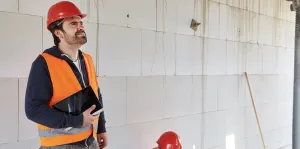To win a property line dispute, you need strong proof from several sources. The most important papers include surveys done by professionals, old property records, maps from the county office, and permits for building. Real items that mark property lines can help your case, along with pictures taken from above and old photos that show boundaries. Having expert surveyors speak about your case makes your argument stronger. When you gather all these pieces of proof together, you build a solid case that can stand up in court. The more carefully you prepare your evidence, the better your chances of winning.
Key Takeaways
- Professional land surveys from certified surveyors, including recent measurements and historical data, provide the strongest evidence for boundary disputes.
- Official property records, deeds, and county assessor maps establish the legal history and documented boundaries of the property.
- Physical boundary markers, including original pins, posts, and monuments, verified by professionals carry significant weight in legal proceedings.
- Building permits, inspection reports, and documented compliance with local regulations demonstrate historically accepted property lines.
- Aerial photographs and dated visual evidence can document long-standing property markers and unauthorized boundary changes over time.
Property Survey Documentation and Recent Measurements
The property lines were first mapped out in 1987 by surveyor James Mitchell, who was licensed to do this work.
He wrote down exact measurements and placed markers to show where the property starts and ends.
In 2023, surveyor Sarah Thompson checked these boundaries again and found some problems.
The northern edge of the property doesn’t match the old measurements – it’s off by 3.2 feet.
This means about 426 square feet of land is now in question, as someone might be using land that isn’t theirs.
Historical Deed Records and Title Documents
Looking at old deed records from 1952 until now shows several differences between how the property was first described and how it changed hands later.
These differences need careful study, especially about property lines on the southeast side that were changed in a 1968 update to the deed.
These paperwork mix-ups mean more than just disagreement about measurements. Papers from 1974 show property lines were moved in a way that doesn’t match older records.
When following the chain of ownership, we found changes made during the 1980s land split that might not have been done correctly. This could affect how property lines are drawn today and who owns what land.
County Assessor Maps and Official Records
The systematic analysis of county assessor maps provides fundamental historical context for property boundary determinations through official documentation of parcel divisions and dimensions over time.
Tax assessment records maintained by county offices serve as authoritative sources for verifying property lines, ownership changes, and boundary modifications.
These official records, when combined with detailed boundary line documentation from surveys and plat maps, create an all-encompassing foundation for resolving property line disputes.
Historical Map Analysis
Looking at old county maps and records from the last hundred years, researchers built a clear picture of how property lines changed in the disputed areas.
By studying how the land was used and divided over time through different maps, they gained important clues about boundary changes.
Land surveyors checked the maps’ trustworthiness by comparing them with other records, like original property layouts, written descriptions of land borders, and known landmarks.
This careful study of old documents helped find mistakes, changes in boundaries, and errors in today’s property lines, making it easier to settle current arguments about where properties begin and end.
Tax Assessment Records
Tax records from your county help prove where property lines are and who owns the land.
These records show important details about property size, changes made over time, and past property values that can help settle boundary disagreements.
Property owners need to get official copies of tax maps and records from their county tax office.
It’s important to know how tax assessments work and how to challenge them, since boundary disputes can change how much your property is worth.
When using these records to make your case, you need to show how they match up with other papers like surveys, deeds, and old maps to prove the boundaries have stayed the same over time.
Boundary Line Documentation
County assessors keep official records that show where property lines are located, which helps solve disagreements between neighbors about land boundaries. These records are legally binding and spell out exactly which land belongs to whom.
If you’re dealing with a boundary issue, you should get copies of these key documents:
- Maps that show how land was divided into lots, with measurements
- County maps that have special numbers to identify each piece of property
- Professional surveys that mark property corners and distances
- Old records showing how properties were split up or combined over time
When these documents are properly stored at county offices, they provide solid proof that courts can use to settle property line disputes.
Professional Land Surveyor Reports and Testimony
Land surveyors checked the property lines several times and spoke as experts about where the boundary should be between the Wilson and Garcia properties. They carefully looked at old markers, took measurements, and studied past property papers to figure out the right boundary line.
The surveyors’ training and years of working on property line disagreements made their findings trustworthy.
When each surveyor spoke, they showed they followed all the rules and met all the requirements that the state sets for their work.
Their detailed measurements from the field, plus clear records of how they did their surveys, gave the court solid proof to help decide where the true property line runs.
Photographic Evidence and Aerial Imagery
The photos and overhead views helped confirm where the property lines were located. Taking pictures from above has made it much easier to show and record property lines clearly, which helps when dealing with legal matters.
- Old overhead photos showing property markers and buildings that have been there a long time
- Dated photos showing where someone may have crossed property lines or made changes
- Clear drone photos showing what the property looks like now
- Computer-made maps from the air that show exact property lines
These pictures work together with regular land surveys, giving courts solid proof of where boundaries are and how they’ve changed.
When experts explain what the pictures show, it makes property line claims much stronger.
Witness Statements From Long-Term Residents
Neighbors who have lived in the area for many years can help solve property line disagreements. Their memories and stories tell us how land was used and where fences stood in the past. People who have watched the property lines for many years make strong witnesses in these cases.
| Witness Type | Value to Case | Key Information |
| Original Owner | Very High | Previous boundaries |
| Adjacent Neighbor | High | Historical usage |
| Community Elder | Medium | General area knowledge |
Courts trust people who took care of the properties, saw boundary markers being put in, or were part of old agreements about property lines. When paperwork is unclear, these stories help figure out where the true property lines should be.
Building Permits and Construction Records
The extensive collection of building permits and construction records provides critical documentation for establishing historical property lines and development patterns.
Construction permit applications from 1952-1974 contain detailed site surveys, proposed structure locations, and setback measurements that demonstrate consistent recognition of the disputed boundary.
Building inspection reports throughout this period further corroborate the originally surveyed property lines through their documentation of structure placement and compliance with local zoning requirements.
Historical Construction Documentation
Historical building records help settle property line disputes by showing when buildings went up and what approvals they got. The way buildings were constructed and updated over the years can tell us a lot about property lines through old records.
Important records to look at include:
- Old building permits that show where buildings sit and how far they are from property lines
- Building plans with measurements of property lines
- Old records of building updates that changed property lines
- Records showing how building shapes changed over time
These old papers help us understand how properties grew and changed over time. They can support or question current property line claims by showing what building work was officially approved in the past.
Permit Application Details
Building permits and records are important proof when neighbors disagree about property lines. These papers spell out where buildings sit on lots, how far they stand from boundaries, and the exact size of properties. You’ll find careful measurements from surveyors, drawings of building sites, and building details that show where things were meant to go.
City and town offices keep detailed records of when permits were asked for and given out. These files tell us when buildings got the green light and when they went up.
Every permit includes notes from building inspectors and any special requests to build differently than usual rules allow. All this information helps show where buildings, fences, and other fixed structures were supposed to be built in relation to property lines.
Building Inspection Reports
Building inspection reports are important records that show if a property follows local building rules. When inspectors check buildings, they look at things like safety and make sure the building stays within its proper boundaries during construction.
- Past building permits and inspection records show where property lines were accepted.
- Measurements and maps from inspections help prove where property lines are.
- When inspectors approve the space between buildings and property lines, it confirms boundaries.
- Finding buildings that cross property lines can help solve boundary disagreements.
City building offices keep these inspection reports, which often help solve arguments about property lines because they give clear facts about how buildings were built and if they followed the rules.
Physical Boundary Markers and Monument Evidence
Physical markers showing property lines provide key proof in boundary disputes. Common markers you might find include metal pins, stone blocks, concrete posts, and official survey markers put in place by surveyors. These markers hold strong legal importance when checked by professional surveyors.
The first boundary markers placed on land matter more than later measurements in most areas. Courts look at how old markers are, what shape they’re in, and if they’re real when deciding how much weight to give them in boundary disputes.
Natural features like trees, streams, or large rocks that show up on old survey maps can also prove where boundaries lie, as long as experts check and confirm them properly.
Frequently Asked Questions
How Long Does a Typical Property Boundary Dispute Case Take to Resolve?
Property line disputes usually take between 6 to 18 months to solve. Simple cases might end faster, but tricky ones can drag on for 2 to 3 years. The time needed depends on how busy the courts are, how well neighbors can talk things out, and whether they can reach an agreement without going to trial.
What Are the Typical Legal Costs Involved in Boundary Dispute Litigation?
Boundary disputes in court usually cost between $10,000 and $50,000. The main costs come from paying lawyers, hiring land surveyors, bringing in experts to testify, filing papers with the court, and working with mediators to settle the case.
Can Adverse Possession Claims Override Existing Property Boundary Documentation?
Property lines shown in official documents can be changed through adverse possession when someone uses land that isn’t legally theirs. This can happen if they meet strict rules: they must use the land without permission, do so openly where everyone can see, and keep using it without breaks for several years as required by their state’s laws.
What Happens if Both Parties Refuse to Accept the Court’s Decision?
When parties don’t follow what a court decides, they can get in trouble for disobeying. The court can take steps to make them follow its ruling, such as taking their property, making them pay money, or sending police to enforce the decision. If both sides still won’t agree, they might want to try working things out through a peacemaker or by making a deal between themselves.
Can Mediation Be Used Instead of Going to Court?
Mediation is a helpful way to solve problems without going to court. A trained mediator helps people talk through their disagreements and find solutions that work for everyone. This process is usually faster and cheaper than going to court, and it helps people stay on better terms since they work out the solution together instead of having a judge decide for them.
Conclusion
Property boundary disputes require strong evidence to win, and our team at Ace California Law knows exactly what you need to build a solid case. The most convincing evidence includes recent professional land surveys, historical property records, and key legal documents. Your case becomes stronger when you gather multiple types of proof, like county records and expert opinions. When making decisions about property lines, courts pay close attention to current professional surveys, clear boundary markers, and detailed historical records that show property ownership over time.







